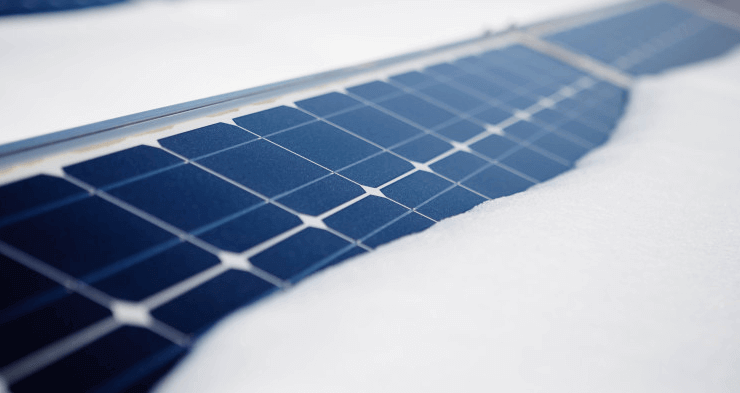Snow On Solar Panels: Do Solar Power Plants Also Work In The Winter?
Winter is far from being the prime time for operating photovoltaic systems. Snow and ice are a real headache for the modules and the yield production. So how can you best prepare your PV system for the winter months? We’ve collected a number of tips from installers to get your solar plant safely through the winter.
While cold weather doesn’t affect the efficiency of solar panels in theory, the reality is often quite different. The fewer hours of sunlight, the lower intensity of the sun’s rays, and the coverage of solar panels with leaves, frost, and snow reduce the yield immensely.
In addition, snow-covered rooftop-mounted systems can also pose an increased risk. With proper preparation, you can still generate good yields from the winter sun’s rays. We show you how to optimize your photovoltaic yield in winter.
Photovoltaic winter checklist
1. Technology check
At the beginning of the cold season, get your solar power plant inspected to make sure it is free of defects. Are the cabling and connections still in good condition and not exposed? Are all screw and clamps tight, are all connections leak-proof? For tracker systems, make sure bearings, shock absorbers and oil in the gears are in perfect condition. Create a technically flawless basis for optimal operation of your PV system.
For roof-mounted systems, it is important to regularly check the guards on the roof edges so that sliding snow and ice are not a potential danger to anyone.
2. Tracker systems
If you have a single or dual-axis tracker system, you should then increase the angle of inclination of your PV modules to make it easier for it to slide off.
3. Snow removal
Opinions differ when it comes to clearing snow on solar panels. You might not consider doing it, but if you do, it is essential to ensure that the modules are not damaged by the mechanical and/or chemical effects.
The application of special coatings is also controversial, as the cost and benefits cannot yet be conclusively assessed. Experience has shown that light layers of snow and ice quickly thaw on modules, as the modules themselves heat up.
WARNING: Be aware of your safety and the safety of others when removing snow on your own. General accident prevention regulations applies here.
Load capacity of modules and roofs: snow removal and measures against the formation of ice and excessive snow accumulation on certain parts of the roof are particularly advisable in areas with increased snowfall and on roofs that have low static load reserves.
Indeed, too much snow can exceed the load capacity of the modules and cause cracks or broken glass. Significant snow masses can also lead to a particular additional load on the roof statics, especially on flat roofs.
Its removal is therefore essential and should be carried out and/or supervised by experienced specialists.
Is snow removal worthwhile at all?
Clearing snow from a photovoltaic system is costly. In terms of an entire operating year, the yield gain from regular removal is also negligible, since only a few hours of sunlight provide yields in the winter months anyway. This is the conclusion of the TEC Institute for Technical Innovation, which conducted a study during a snowy winter to check how much influence regular module clearing has on electricity yield. The results of the comparative tests on a ground-mounted system were startling: only about 1.4% of the annual yield was gained from regular removal.
It remains to be seen whether it will be worthwhile in the future in direct marketing to keep the modules free of snow in winter, because there is a high demand for electricity and thus the kilowatt hour is disproportionately well remunerated.
Snow does have one advantage
There are also positive sides to the white winter coat. If the photovoltaic system is well-cleaned, the surrounding snow provides a reflection of the incoming sun rays and can optimize the performance of the PV system – at least for the winter months – a good bit.
Let us see how much snow will fall this year. Be prepared, though, in any case. Remember: after the winter is before the winter. Check your PV system in spring for possible damage that may have been caused by harsh weather conditions.
In addition to your own visual inspection, thermography offers a quick and inexpensive way to have your modules inspected for invisible damage.
This is a free translation. To read the original article in German: click here.





